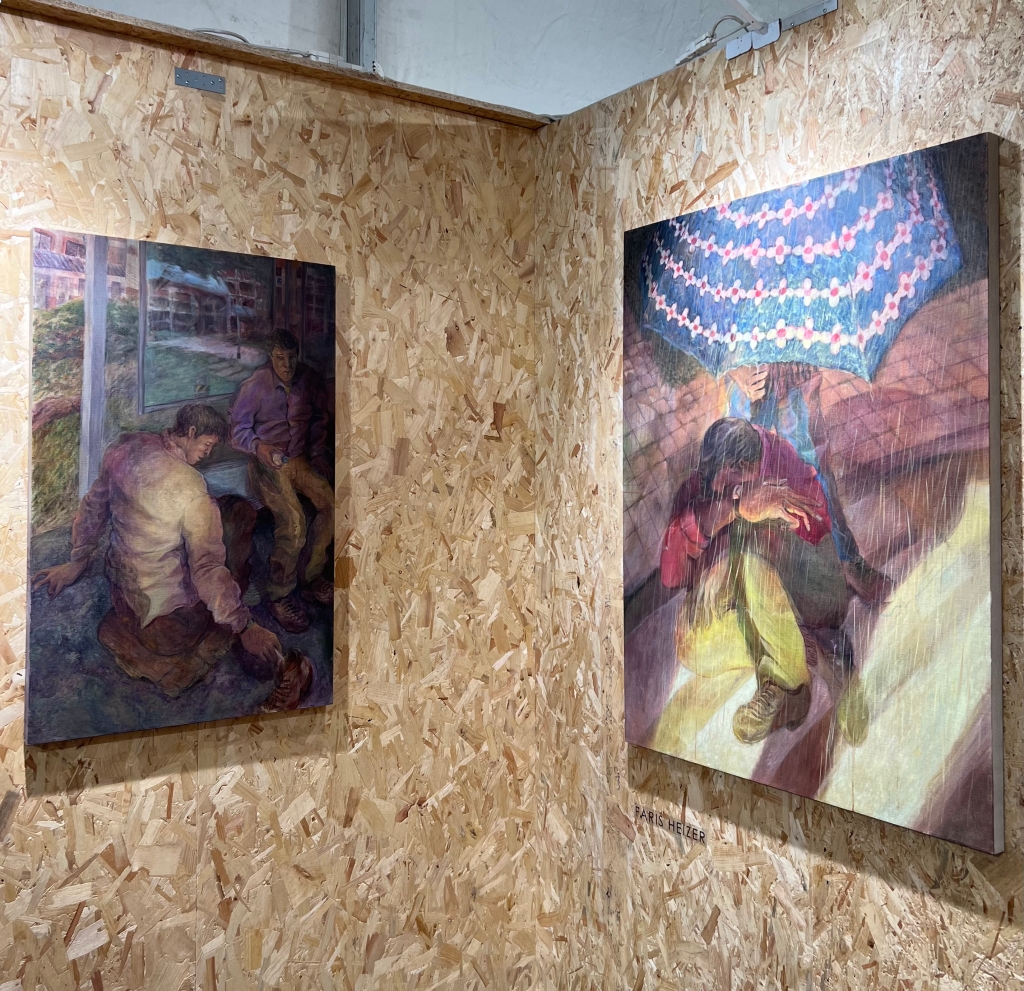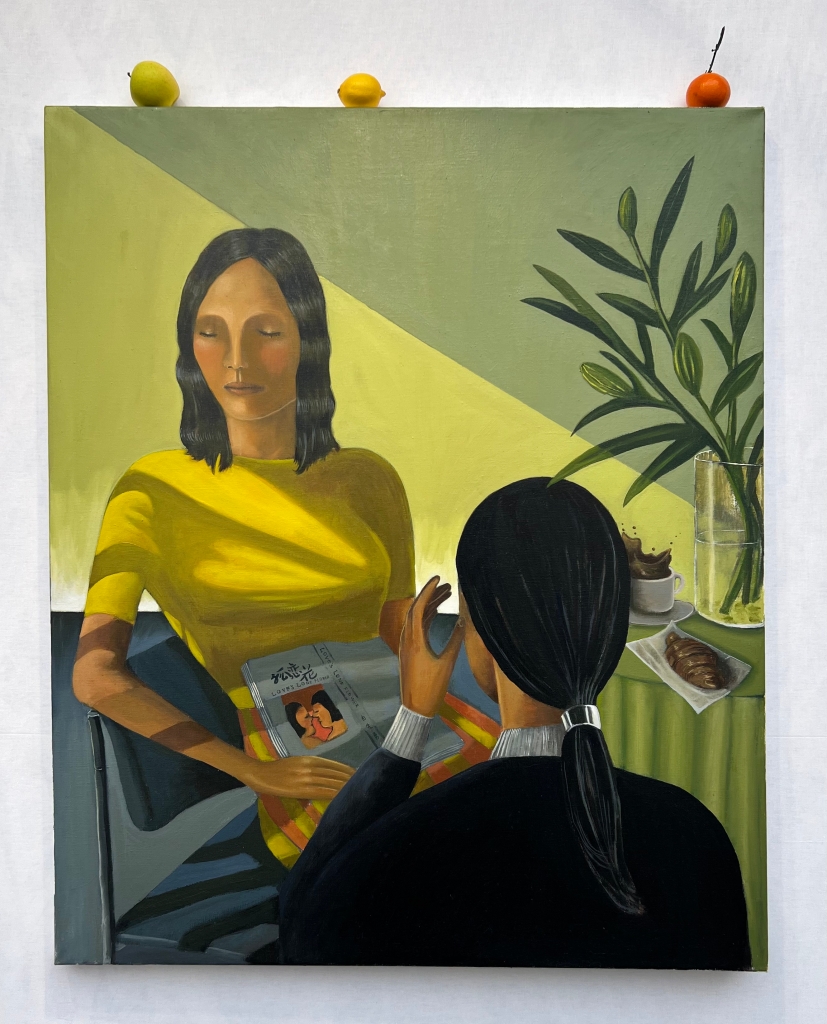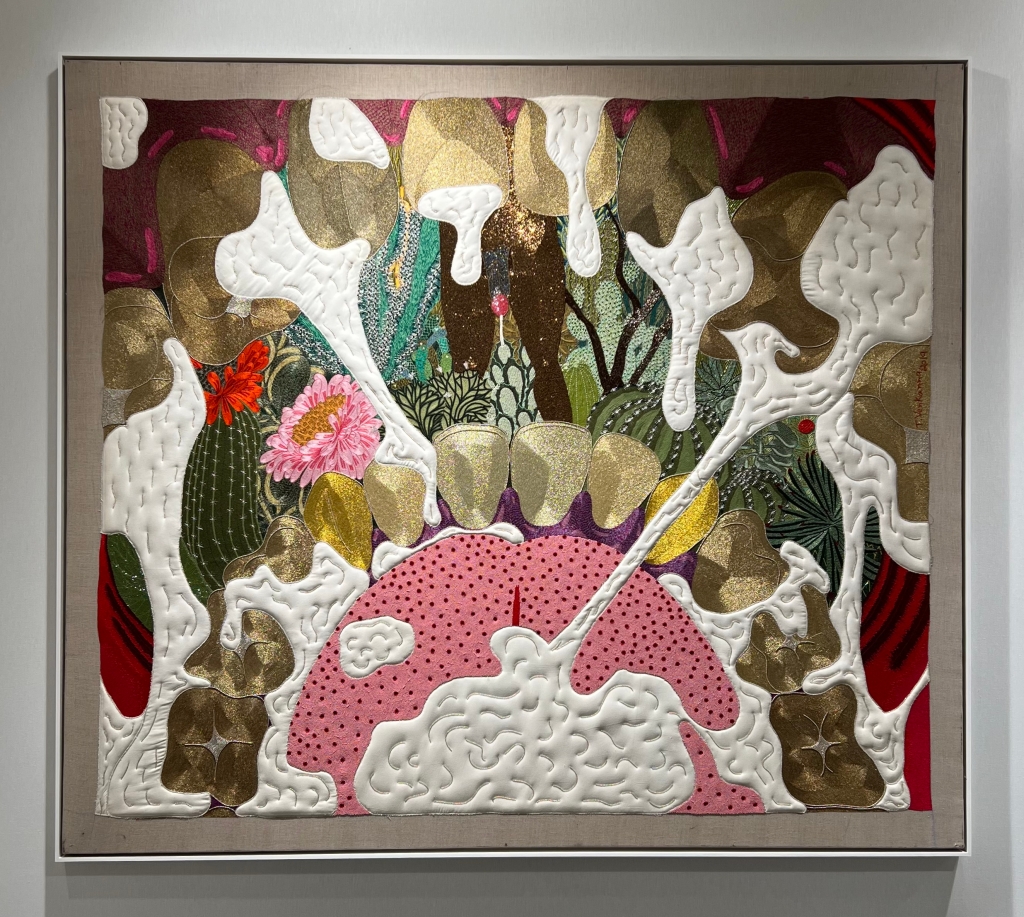There are different markets in the art world, you have the North American art market, the South American art market, the African art market, the Asian art market, etc. The Asian art market has always been on my radar – it has always fascinated me; from the very beginning of memoirsbychard, I’ve always had my eyes on that region. From their installations to their sculptures to their artistic philosophy, the Asian market has always captivated me.
2013 saw Art Basel establish itself in Hong Kong, and this year saw Frieze set up shop in South Korea, with Frieze Seoul. So as a London-based art writer, when I heard the news of Frieze Seoul I was ecstatic. For that first week of September, my eyes were furiously peeled to Instagram.
I wanted to be in Seoul for Frieze, and see KIAF, South Korea’s homegrown fair, along with other shows. But alas, I couldn’t be there.
So, with the emergence of Paris+, I did some digging, and I found some French fairs. My research came back positive, and I came across AKAA art fair, an African art fair, and Asia Now. Sitting in the old capital of the art world, under my nose, was Asia Now, a fair dedicated to Asian talent.
For those who don’t know, Asia now is the first art fair in Europe to be entirely dedicated to contemporary Asian art, and 2022 was the year the fair turned eight.
So with that introduction completed, let’s delve into the art, starting with favourite booths, we have Cuturi Gallery, Yavuz Gallery and Eve Leibe Gallery.
Starting us off is the Singaporean gallery, Cuturi Gallery. Cuturi Gallery had a dual presentation with Casey Tan and Faris Heizer. The works by Casey Tan had a unique colour palette of pink, light green and light blue. Dotted around the works were different motifs. In The Dives, Tan presents a class divide between the ultra-wealthy and the working class. If you focus on the upper part of the piece, you can see someone trying to desperately enter the space of the ultra-wealthy.

In Milkshake, we see a group of individuals engaged in an orgy, but if we analyse each of the figures, there’s a depiction of the seven deadly sins. The Dives and Milkshake are good examples of Casey Tan’s work, as it is a fusion between drama and fantasy.

Moving on to Faris Heizer, and his work acts as a good counterweight to Tan’s dramatic scenes. Intimate and charged with emotion, Heizer’s figures exist in their own world and tackle the problems that come with everyday life. The texture of his work was something that immediately captured my eye, and this is achieved by the artist using linen. In comparison to canvas, linen does not completely absorb materials such as oil or acrylic, hence the texture we see in the works.

Next is Yavuz Gallery, and they had a group presentation with standouts such as Nona Garcia, Abdul Abdullah and Leslie de Chavez.
Nona Garcia’s installation titled, White elephant examines the Catholic Church. Garcia is of Filipino heritage, and her installation focuses on Catholic ornaments traditionally found in Filipino households. For a Catholic family in the Philippines, these ornaments offer spiritual and physical healing. The ten images on display are x-rayed saint hands made from wood.

Based in Perth, Australia, Abdul Abdullah is an artist of Malay and Indonesian heritage, and his practice explores ideas such as diaspora, migration and his Muslim identity. In addition to this, his practice traverse precarious spaces in which elements of his identity reside. This piece on show is of a much lighter tone, as viewers are presented with an anamorphic rock in a forest setting with a white drawing superimposed on it. The artist explains it is a sentient rock which has presided over mankind for centuries and is simply happy to see life.

Leslie de Chavez’s piece titled, A Tale Told A Thousand Times is a politically charged piece and confronts the tenure of Rodrigo Roa Duterte, the former president of the Philippines. During his presidency, he was strict on drug use and imposed policies that tackled crime and corruption. His tough stance on these areas resulted in a wave of unlawful killings. An example of this brutality was the killing of two men who graffitied ‘Duterte Ibagsak’ which is Tagalong for ‘Down with Duterte’. It is those two men that De Chavez based this piece on. What was initially thought to be two men using illegal drugs was later found to be false, and it is here we see why the title, A Tale Told A Thousand Times has such a symbolic meaning because it not only highlights such atrocities but emphasises scenarios such as this have happened before and resulted in no subsequent change. The viewer is faced with nothing but reality; a tragic and cautionary tale of what happens when you challenge a system such as this.

Eve Leibe Gallery had a solo presentation with Skyler Chen. Skyler Chan’s work examines his queer identity through his East Asian heritage. Across his work, we see birds, fruits and magazines. In this presentation for the fair, the fruits appear in the booth, with pieces adorned with them. One thing you will notice about Skyler Chen’s work is the aspect of observation. Whether it is a figure looking at another figure in a magazine, or a figure looking at another figure in an open space, this aspect is always present in his work.



‘Striking and forceful’ are words I would use to describe these elemental scenes by Yang Jiechang – the artist shows us the raw power of nature. The texture of the works are due to Chinese ink and mineral colour on silk.


Theegulla Venkanna’s piece titled, Golden Teeth is a true standout due to its composition and materials. Starting with composition, the artist gives us an outward view from the inside of a mouth. From this view, we see what appears to be a tropical forest, and on the inside of the mouth is saliva. Moving on to its creation process, the artist used pencil and then hand embroidery on linen. This is my first time encountering the artist, and it is evident that Venkanna has been honing his skills when it comes to this process; there are different textures across the piece, from the red dots on the tongue which are known as papillae, to the saliva, to the molars.


Inspired by Kamasan paintings, a traditional Balinese narrative painting style, these paintings are known for decorating Bali temples and houses of the aristocracy. However, here, the artist flips the script, and there’s a subversion, instead of upper-class women or deities, we are presented with two working women. Coloured in blue, these women are the central focus of the piece, they are elevated and given importance. In most of his paintings, Kuswara presents his figures with a deep blue colour. This is intentional because as much as he wants to celebrate society and its culture, he wants to explore the problems that plague society as well.

A ‘ceramic painting’ is how I describe this piece by Kara Chin. In this particular piece, the artist creates this alternative world which straddles the primitive and the modern, and this is done by referencing the movie franchise, Jurassic World. It’s a provocative visual as it provides viewers with familiar and estranged motifs.

Anas Albraehe is a Syrian-born artist based in Lebanon. ‘Extreme sensibility and humanity’ is how he describes his practice, his work consists of these soft, dream-like scenes which act as a metaphor for the psychological state of mind. Among these scenes are his subjects, who show a layer of vulnerability.

So that was a summary of my Asia Now experience. As someone who has a deep fascination with the art markets around the world, I see fairs such as Asia Now as a good entry point. When you can give European collectors access to contemporary Asian art, especially emerging art markets such as Singapore and the Philippines, you bring nothing but value. So it goes without saying, if you want a fair where you can see talent from Asia in Europe, then it is Asia Now.
With regards to Paris being back… Well, it’s obvious… Paris is slowly making its return. When you have a fair which has been going on for 8 years such as Asia Now, coupled with the likes of AKAA art fair and now Paris+, you can’t ignore this French city. In addition to that, if you include the impact of Brexit, then we as Londoners need to start asking ourselves, how long can London maintain its top spot in Europe? How long is it going to be before Paris eclipses us? These are questions I’ve always asked myself, and the frequency has only increased now that we have Paris+.
Written by Chard Adio
Featured Image: Skyler Chen at Eve Leibe Gallery by Chard Adio